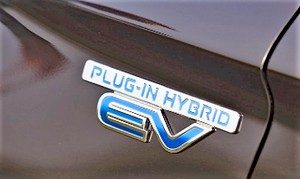Better Late Than Never
Europe’s top-selling plug-in hybrid, Mitsubishi’s Outlander PHEV, has been coming to the U.S. for years, but has been postponed more than five times. All sorts of things were blamed like battery shortages and meeting U.S. safety standards. The real reason was financial woes which were amended last fall with a tie-up with Nissan. Now, the automaker says the plug-in SUV will arrive at U.S. dealers in March 2018. Since Mitsubishi’s U.S. website now has a dedicated page for it, we assume a sixth promise won’t be broken.

When it arrives, the Outlander PHEV will be available in two trim levels that largely match those of the gasoline Outlander. The base SEL S-AWC model will start at $34,595 plus destination charges. The Outlander PHEV GT S-AW has the same standard equipment as the gasoline Outlander GT Touring Package and will be priced at $40,295. If the federal tax credit is still in place next March, the Outlander PHEV is eligible for a $5,836 in federal tax credit according to the fueleconomy.gov website, and state programs are available in many states as well.
Mitsubishi says the all-electric range will be 22 miles for the PHEV using the EPA cycle. Total fuel economy is expected to be 25 mpg EPA rated for gasoline only operation, but this can be improved if the driver utilizes the all-electric drive function and keeps the gas engine off, boosting it to a 74 MPGe (miles per gallon equivalent).

Motivation comes via a 2.0-liter DOHC four-cylinder engine churning 117 horses and 137 pounds-feet torque that is merged with front and rear electric motors. Both electric motors provide 60 horsepower, with the front turning out 137 pounds-feet of torque while the rear has a hefty 195 pounds-feet.
The two motors offer all-wheel drive, something unique for a mainstream PHEV (the luxury plug-ins from BMW, Mercedes, Porsche and Volvo offer this as well, but at quite a premium),. The battery that supplies the electricity for the motors is a high-capacity 12 kWh lithium-ion battery pack developed specifically for the PHEV system. The battery is positioned beneath the passenger compartment subfloor between the front and rear axles with no intrusion into the passenger compartment
Similar to Other Plug-ins
Like all plug-in vehicles, regenerative braking is used to generate electricity for the battery pack. The level of regenerative braking can be selected by the driver at any time using steering wheel paddle shifters.
The Outlander PHEV can operate in all-electric mode, use the gasoline engine as a generator to power the electric motors, or use both electric and gasoline power for propulsion.

Mitsubishi covers all the bases when it comes to recharging the battery pack. The company is including a CHAdeMO fast charging port which can fill the 12-kWh battery from empty to full in 20 minutes. That’s in addition to the now standard Level 2 240-volt charging that will fill the battery in 3.5 hours and Level 1 120-volt charging that juices the battery in eight hours.
A bonus for buyers is a 1,500-watt AC power inverter that draws power from the battery pack. That’s enough to run a coffee pot, TV or electric grille for a picnic or tailgate party.
The Outlander PHEV is a fairly handsome, if conservatively styled vehicle. Small changes—such as a gloss black front fascia and different wheels differentiate plug-in hybrid models from their gasoline-only siblings.
On the safety front the 2018 Outlander PHEV crosses all the Ts and dots all of the Is with blind spot warning, rear cross traffic alert, lane change assist and surround view camera. Available are adaptive cruise control, automatic high-beam headlights and forward collision mitigation.
The Outlander PHEV has been a long time in coming, but it’s better late than never.
Related Stories You Might Enjoy:
Road Test: 2016 BMW X5 xDrive40e PHEV
Road Test: 2016 Volvo XC90 PHEV
First Drive: 2016 Volvo XC90 PHEV
